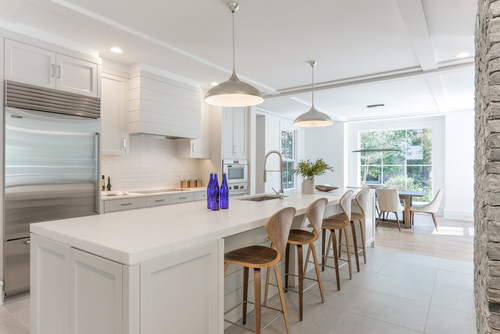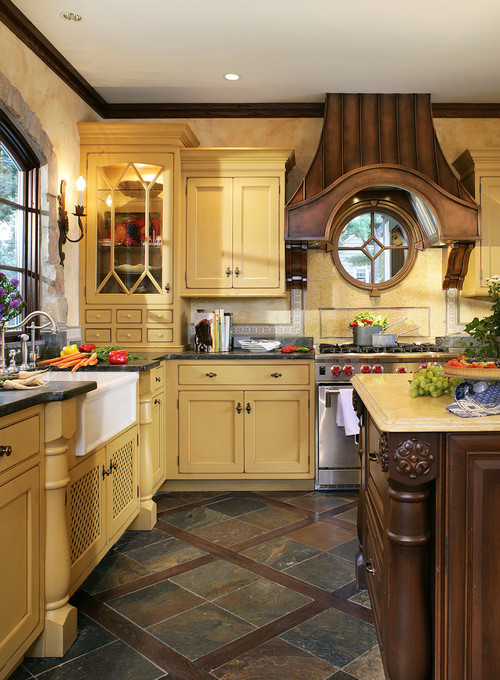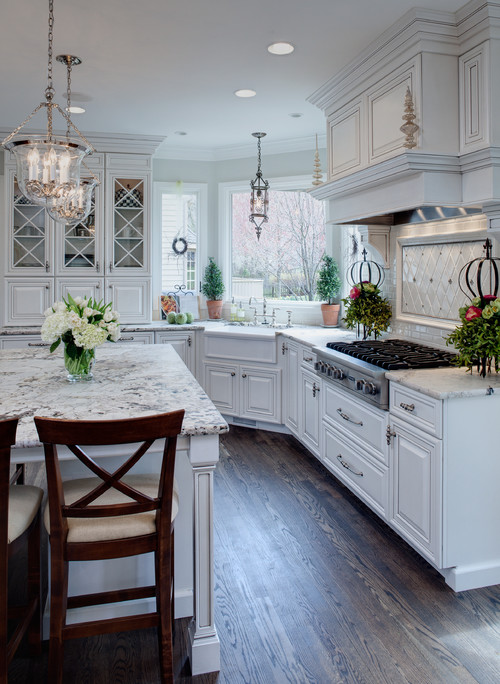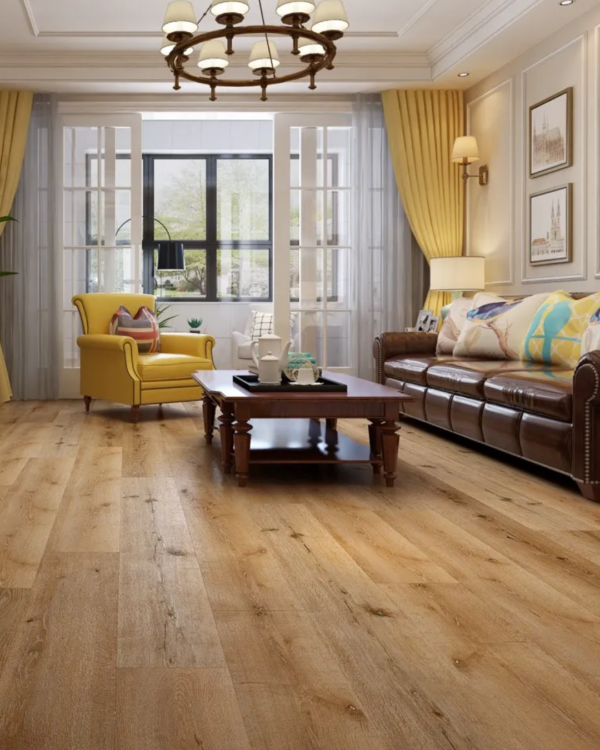Your cart is currently empty!
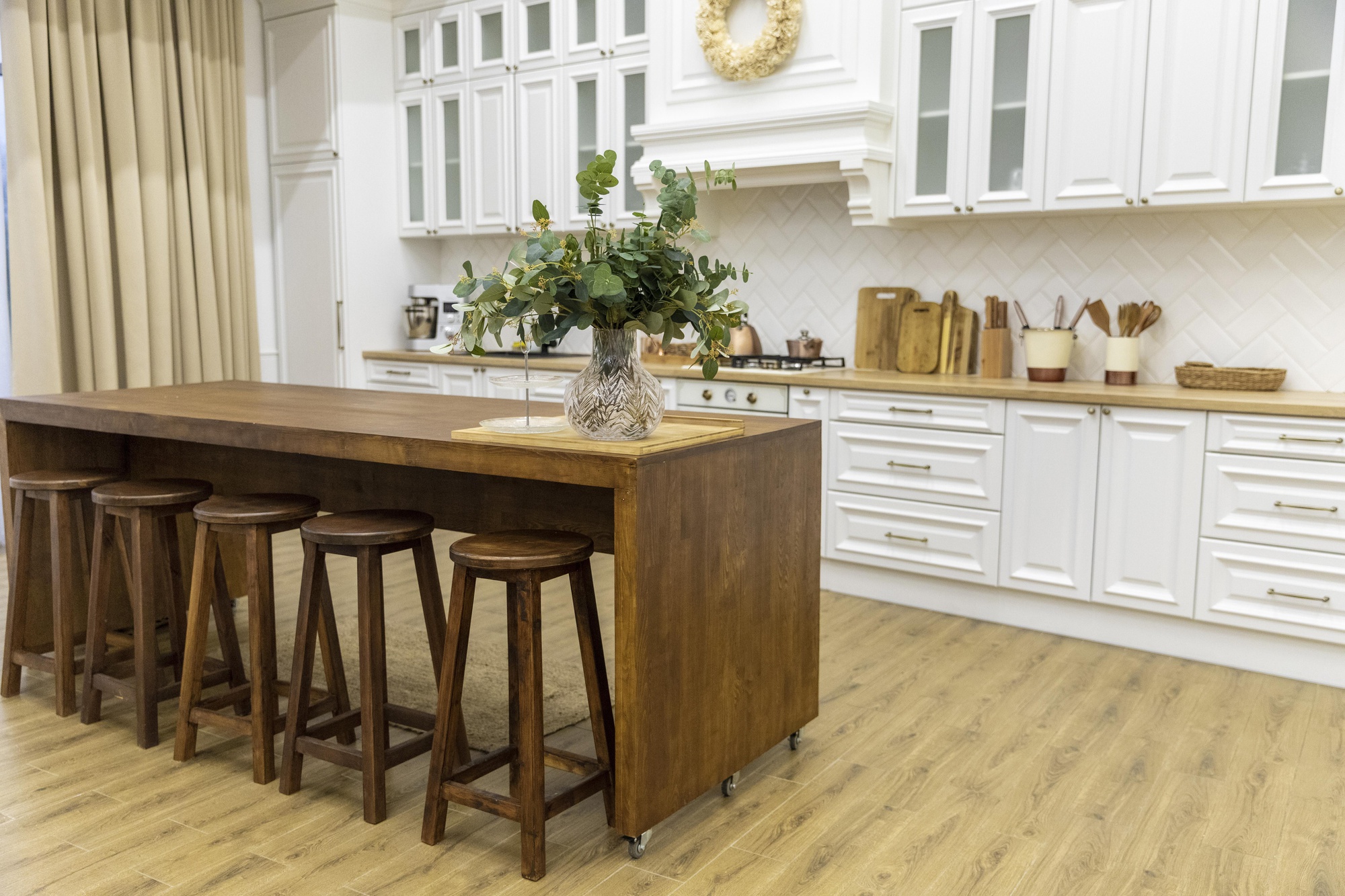
Your kitchen is the heart of your home. It’s where you cook, entertain, and create memories with your loved ones. Choosing the right kitchen floor for this bustling space is crucial, as it needs to be durable enough to withstand daily wear and tear yet stylish enough to complement your home’s design.
Renovating your kitchen doesn’t mean you have to choose between affordability and style. With the vast array of budget-friendly flooring options available today, you can achieve the kitchen of your dreams without compromising.
However, finding the perfect balance can be a challenge. Many homeowners struggle when selecting a kitchen floor, especially when searching for a balance between nice looks and fitting within their budget. The wrong choice can lead to accelerated wear, obvious staining, and even buckling, resulting in costly replacements and repairs.
Here, we’ll discuss the best stylish and affordable kitchen floor options. You’ll gain valuable insights into materials, their pros and cons, and expert recommendations to help you make an informed decision.
#1 Essential Factors to Consider for Kitchen’s Flooring
When selecting kitchen flooring, it’s crucial to strike the right balance between durability and aesthetics. While a visually appealing floor can enhance the overall look of your kitchen, it must also withstand the daily wear and tear of a busy household.
Experts suggest evaluating your lifestyle needs alongside your design preferences. “Homeowners often face the dilemma of choosing between practicality and style,” says Courtney Wollersheim, interior designer at Floor360. “The key is to select a flooring material that offers a good compromise, ensuring both longevity and visual appeal.”
With that in mind, we came up with a few possible factors you might need to consider:
- Kitchen Traffic: The kitchen is a high-traffic area in the home, so flooring must be durable and easy to maintain.
- Durability Needs: The flooring should withstand foot traffic, spills, and dropped items and maintain its appearance over time.
- Household Considerations:
> Elderly Family Members: Non-slip surfaces are essential for safety.
> Families with Children: Flooring should be spill-resistant and easy to clean.
> Pet Owners: Scratch-resistant materials are essential to prevent damage.
🎁 BONUS: Installation – DIY vs. Professional
Whether to install flooring yourself or hire a professional depends on the material and your expertise. DIY can save money, especially with easy-to-install options like SPC and vinyl. However, professional installation ensures precision and long-term durability for complex materials like ceramic tile or hardwood.
#2 Considering Your Budget on Kitchen Flooring
Be Realistic!
Setting a realistic budget for flooring is essential when planning a kitchen renovation. Getting carried away with high-end options is easy, so you must always balance your desire for quality and aesthetics with what you can afford during your projects.
According to the National Association of Home Builders (NAHB), the average kitchen flooring cost varies widely based on the material. For instance, SPC flooring can range from $3 to $7 per square foot, while ceramic tiles might cost between $6 and $15 per square foot. Additionally, the lifespan of these materials also varies, with SPC lasting around 20-25 years and ceramic tiles often exceeding 50 years with proper maintenance.
To organize your home renovation, you can start by determining the total amount you’re willing to spend on the entire project and then allocating a portion specifically for flooring. This will help guide your choices and ensure you don’t overspend on this critical aspect of your kitchen remodel.
Data from NAHB highlights the importance of considering initial costs and long-term durability when selecting kitchen flooring. This ensures that you make a decision that fits your budget and long-term needs.
Balancing Initial Costs with Long-Term Value.
While choosing the cheapest flooring option might be tempting, not considering long-term value can result in additional expenses. Some materials may have a higher upfront cost but offer better durability and lower maintenance expenses over time.
For example, investing in high-quality SPC might cost more initially, but its longevity and minimal upkeep requirements can save you money in the long run. Balancing these factors ensures you choose a flooring option that fits your budget while providing excellent value over the years.
#3 Stylish and Affordable Kitchen Flooring Options
After reviewing what you should consider before selecting your new flooring, it’s time to see the affordable elegance we discussed. Here are four of the top choices for kitchen flooring!
1. Ceramic Tile
Ceramic and porcelain tiles are classic kitchen flooring choices known for their durability and design versatility. Ceramic tiles are made from natural clay and fired in a kiln, while porcelain tiles are made from a denser type of clay and fired at higher temperatures, making them more durable and water-resistant. According to the Tile Council of North America, ceramic and porcelain tiles can last for decades with proper care and are highly resistant to stains and moisture, making them a durable choice for kitchens.
Pros:
- Durability: Ceramic and porcelain tiles resist scratches, dents, and heavy foot traffic.
- Ease of Cleaning: Their non-porous surfaces are easy to clean and maintain.
- Design Variety: It is available in various colors, patterns, and textures, allowing creative design options.
Cons:
- Cold and Hard: Tiles can feel cold underfoot and are hard, which may be uncomfortable for prolonged standing.
- Slip Hazards: Some tiles can be slippery when wet, although textured options can mitigate this risk.
- Cost: Ceramic tiles cost from $6 to $15 per square foot, while porcelain tiles can cost between $6 and $20 per square foot, depending on the style and quality. Installation can add to the cost, making it a higher initial investment than other options.
2. Engineered Hardwood
Engineered hardwood consists of a thin veneer of real wood on top of multiple layers of plywood, providing the look of solid hardwood with added stability and moisture resistance. The National Wood Flooring Association (NWFA) states that engineered hardwood floors can last 20-30 years with proper care, balancing cost and durability. It’s popular for those who desire wood’s elegance without solid hardwood’s drawbacks.
Pros:
- Aesthetic Appeal: Offers the natural beauty and warmth of wood.
- Water Resistance: More resistant to moisture compared to solid hardwood.
- Installation: The flooring can be installed over various subfloors and often features click-lock installation.
Cons:
- Less Durable than Solid Hardwood: The thin veneer can wear down over time and is less resistant to heavy use.
- Moisture Damage: While more resistant than solid wood, excessive moisture can still damage it.
- Cost: Engineered hardwood costs between $6 and $20 per square foot, making it a mid-range option. The long-term value is good, as it can be refinished once or twice during its lifespan.
3. Natural Stone
Natural stone flooring options include granite, marble, limestone, and slate. These add a touch of luxury and uniqueness to any kitchen. Each stone type has distinct characteristics, from the veining in marble to the rugged texture of slate.
Pros:
- High-End Look: Provides a sophisticated and unique appearance.
- Durability: Highly durable and can last a lifetime with proper care.
- Uniqueness: Each stone tile is unique, adding to the aesthetic value.
Cons:
- High Maintenance: Requires regular sealing and specific cleaning products.
- Slippery: Some stone types can be slippery when wet, though textured options are available.
- Cost: Natural stone flooring ranges from $10 to $30 per square foot, with additional costs for sealing and maintenance. Although its longevity can make it a worthwhile choice, it is still the most expensive option on our list.
4. Stone Polymer Composite (SPC)
Stone Polymer Composite (SPC) has become a favorite among homeowners due to its durability, affordability, and style. SPC mimics the look of natural wood or stone, providing a high-end aesthetic without the high-end price tag. It comprises several layers, including a protective wear layer, a realistic photographic layer, and a sturdy core, making it resilient and visually appealing.
Pros:
- Durability: Resistant to scratches, dents, and daily wear and tear.
- Water Resistance: It can withstand spills and moisture without damage.
- Variety in Aesthetics: Available in numerous styles, colors, and textures to match any kitchen design.
Cons:
- Installation Considerations: Proper subfloor preparation is essential for optimal installation.
- Cost: SPC is generally affordable, even if it is not the cheapest option, with installation costs ranging from $3 to $7 per square foot. Maintenance costs are minimal, primarily involving regular cleaning to maintain its appearance. If the flooring has a click system, you can DIY and avoid installation costs.
🎁 BONUS: Tips for Maintaining Different Types of Flooring
Proper maintenance can significantly extend the lifespan of your kitchen flooring. For instance, placing mats at entrances to catch dirt and moisture, using furniture pads to prevent scratches, and addressing spills immediately can help maintain the flooring’s appearance and durability. We separated one tip from our maintenance team for each flooring type we saw earlier.
- SPC: Regular sweeping and occasional mopping with a mild cleaner keep SPC looking new. Avoid abrasive cleaners to prevent damage to the wear layer.
- Ceramic and Porcelain: Clean tiles with a gentle cleaner and a damp mop. Ensure grout lines are sealed to prevent staining and moisture penetration.
- Engineered Hardwood: Remove dirt and debris with a soft broom or vacuum. Clean with a damp mop and a wood-safe cleaner to maintain the finish.
- Natural Stone: Regularly sweep and mop with a pH-neutral cleaner. Apply a stone sealer annually to protect against stains and moisture.
Augusta SPC vinyl flooring features light brown tones and natural wood grain. The Click-lock installation adds a hassle-free installation experience.
Conclusion
Choosing the perfect flooring for your kitchen is a significant decision that impacts both the functionality and aesthetics of one of the most important rooms in your home. With so many options available, finding the right balance between style, durability, and affordability can be overwhelming.
At Kasabono, we believe in transforming your kitchen (and any other space) with stylish and affordable flooring. This is easily possible with the wide range of benefits only SPC flooring can offer!
Explore the options on our e-commerce site! Our SPC flooring combines durability, water resistance, and aesthetics, making it an excellent choice for any kitchen. Schedule a consultation with our flooring experts now, or request a sample box to create your dream kitchen.

